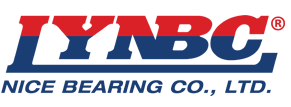.jpg)
- Slewing Bearings
- High Precision Crossed Roller Bearings
- YRT Precision Rotary Table Bearings
- Full Complement Cylindrical Roller Bearings
- Cylindrical Roller Bearings
- Tapered Roller Bearings
- Thrust Bearings
- Angular Contact Ball Bearings
- Deep Groove Ball Bearings
- Split Bearings
- Track Roller Bearings
- Backing Bearings
- Self-aligning roller bearings
- Thin Section Bearings
LYNB cross cylindrical roller slewing bearing can carry axial load, tilting moment and radial load all at the same time. The design and application of the cross cylindrical roller slewing bearings are basically the same as those of the four point contact ball slewing bearing, except that the rolling elements are substituted from balls into rollers and the contact way between the rolling elements and rings is changed from point contact into line contact. Those changes allow for the carrying capacity to be increased, but the wear and the friction moment load are also increased.
LYNB cross cylindrical roller slewing bearings are composed of a inner ring, outer ring, a single row of rollers, cages(spacer), and seal device etc.
In this design, their cylindrical rollers in axial direction is cross-distribution. The length-diameter ratio of cylindrical roller is less than1, It would cause slight movement when rollers running.
LYNB cross cylindrical roller slewing bearing can carry different combined forces caused by axial load, tilting moment and radial load in different working condition. By adjusting the quantity of crossed rollers and contact angle.
There are integral and separate rings in the structure of LYNB cross cylindrical roller slewing bearing. Cages or spacers are usually adopted within design in order to ease friction. Rollers and raceway contact.
This slewing bearing with a design of a full complement of rollers is mainly applied in the condition where a heavier axial load is the primary load, and the requirement for tilting moment and friction moment is not so high.
The basic structure of LYNB cross cylindrical roller slewing bearing as below:
Without gear
External gear
Internal gear
▲ The design’s of all these slewing bearing are based on standard structures; LYNB can design and manufacture many other similar structures in accordance to the special and particular requirements of their customers’. If our customer’s have specific requests then the customer should identify the structure, and mounting dimensions that are required. Please contact the LYNB Technical Center if you need any assistance in this area.
- Lianmeng Road, Jianxi district, Luoyang City,Henan province.
- sales@lynicebearing.com
- techsupport@lynicebearing.com
- +86-0379-60689957
- +86-0379-60689929
- Nettie.Ma






